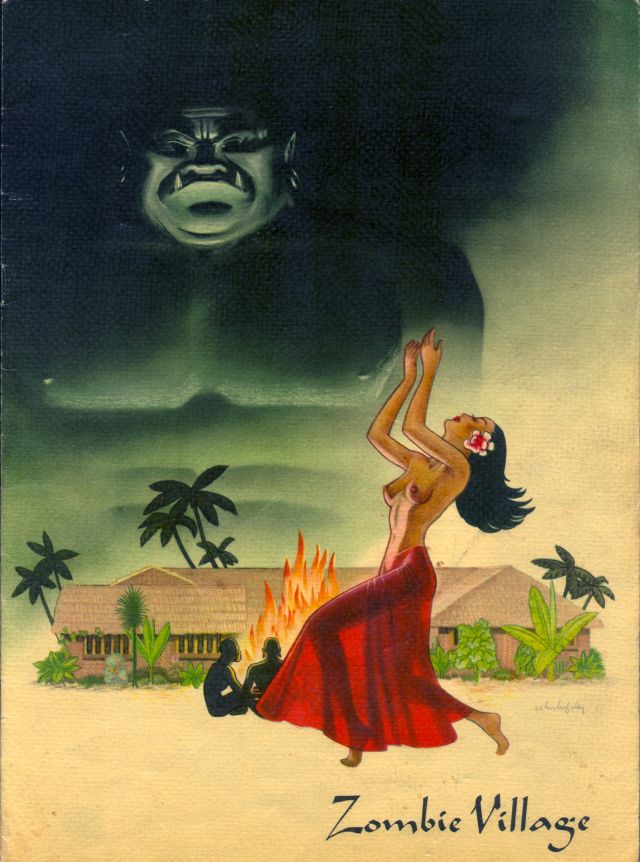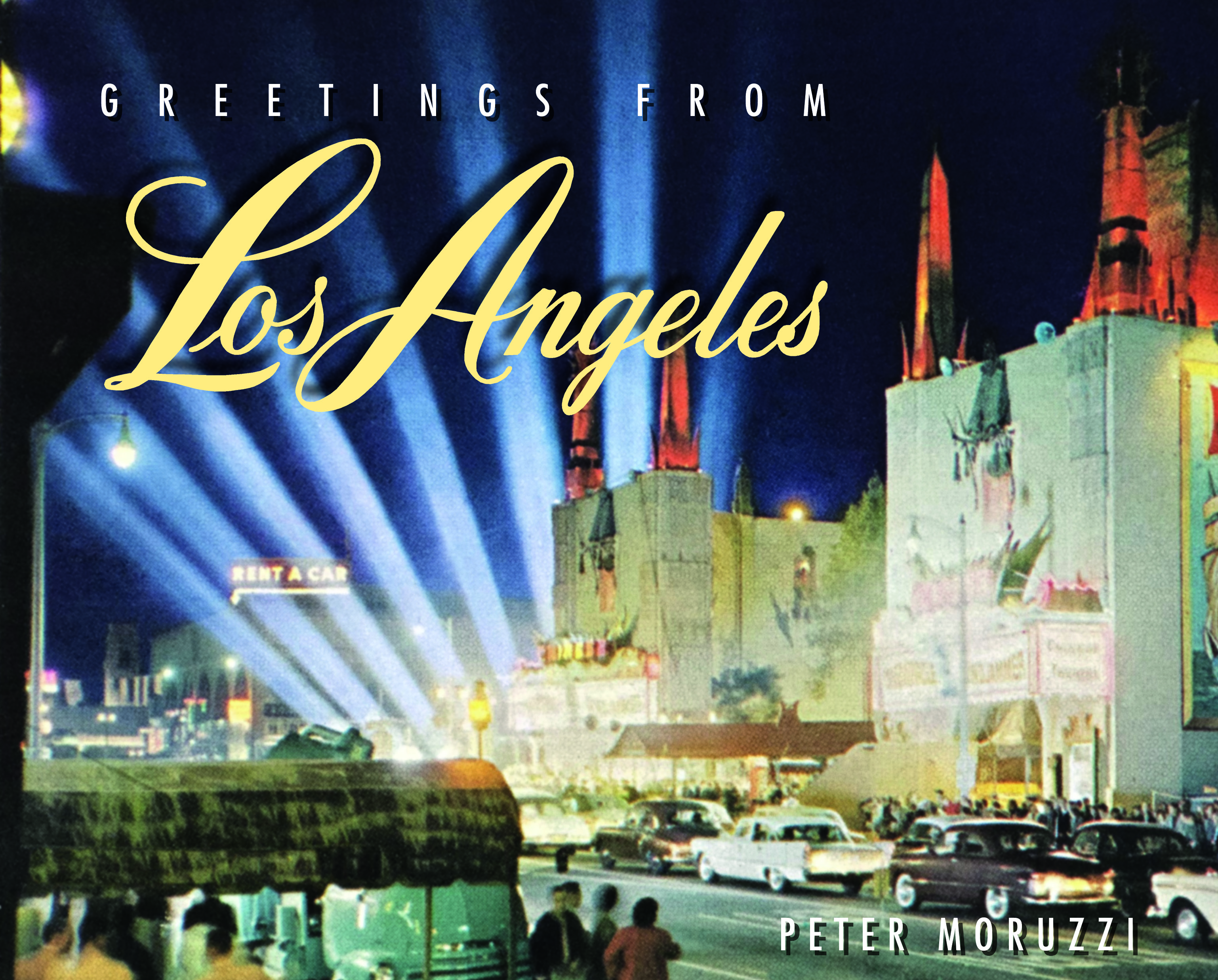
Zombie Village Menu Cover
When I lived in Oakland, California in the 1980s I didn’t know that two of the most amazing Polynesian-themed restaurants were once located across from each other on Oakland’s San Pablo Avenue – Trader Vic’s and Zombie Village. Both are long gone, of course, but the tiki revival of recent years has led to the rediscovery of the paper ephemera and ceramic tiki mugs associated with the hundreds of similar haunts that dotted the landscape in cities across America.

Matchbook cover
For me, it’s the menu covers that I covet most and Zombie Village is one of the best. Hovering zombie…topless native girl…see-through red dress…fire…palm trees…Oakland restaurant.
About Peter Moruzzi
Author and historian Peter Moruzzi is passionate about the middle decades of the 20th century: its nightlife, classic dining, and architecture.
Born in Concord, Massachusetts and raised in Hawaii, Moruzzi graduated from the University of California at Berkeley and later attended the American Film Institute in Los Angeles. In 1999, he founded the Palm Springs Modern Committee (PS ModCom) an architectural preservation group. He is the author of "Havana Before Castro: When Cuba Was a Tropical Playground," "Palm Springs Holiday: A Vintage Tour From Palm Springs to the Salton Sea," "Classic Dining:Discovering America's Finest Mid-Century Restaurants," "Palm Springs Paradise: Vintage Photographs from America's Desert Playground," and "Greetings from Los Angeles." His latest pictorial history, "Greetings from Las Vegas" will be available in September, 2019.






The building actually has a similar look to the original Trader Vic’s on San Pablo Avenue. This is one of the enduring mysteries of the place: Why did Skipper Kent open his Polynesian joint directly across the street from Trader Vic’s? Just to skim off the overflow? I guess so, but Frank “Skipper” Kent was no fake, he did indeed sail the Seven Seas, imported curios and brought back films from there.
Ellen, since I know someone who seems to have a complete scrap book of paper clippings from Frank Kent’s estate, I am guessing your friend is a descendent of the OTHER owner of Zombie Village, Norman “Hafe” Hafer then?
LikeLike
It’s indeed curious why the artist chose a genie to represent the zombie of Zombie Village. Perhaps a shrunken head with stitched lips was a bit off-putting for diners.
LikeLike
This is evidence of the deep-seated confusion/amalgamation of varied “exotica” elements in American pop culture. In this, all tropical islands and their cultures get lumped together, regardless of where they were located. Zombies are from Haiti in the Caribbean, not the Pacific, but of course that mere fact of thousands of miles of separation was of no mind. In the same vein is the 1958 film “Voodoo Island”, starring Boris Karloff, filmed on Kauai and clearly set in the Pacific.
Not to mention that the looming figure in the background looks like a genie, who comes from the Middle East. But that too is a hot-climate location with palm trees, so who cares?
LikeLike
Your description of the Zombie Village menu cover is on target. The last thing you notice about it is the building, which looks like it could be serving Sauerbraten in Cleveland. Outstanding new Blog, Mr. Pete, keep it coming!
LikeLike
I, too, find the building to be far less exotic than one would expect for a Zombie Village, especially compared with the much more ‘authentically’ Polynesian-looking Trader Vic’s across the street.
LikeLike
One of my high school friends’ grandparents owned Zombie Village. She has tons of ephemera from the place. “Friend” her on Facebook…Susan Ragsdale. You can tell Susan that you’re a friend of mine!!! Also, Susan lives in P.S. now!
Great Blog, Pete!
LikeLike
Wow, thanks for the info about your friend Susan. I’ll definitely contact her about her ephemera collection.
LikeLike